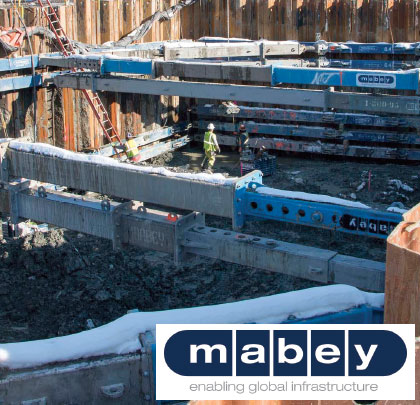LIVEpin Monitoring System expedites completion of remediation project by several weeks, thus reducing costs
THE CHALLENGE
A large commercial construction project near Boston, Massachusetts, spanning 26 acres with plans to build four buildings, ground to a halt after environmental ground testing revealed there were high levels of contaminants in the soil. It would need to be remediated before construction could begin.
The project required a total excavation area of 32,325 square feet with depths ranging from 9–32 feet. Traditional “pump and treat” remediation methods were ineffective because the ground consisted mostly of clay, which is not porous enough to allow water to flush contaminants to the top for removal. Additionally, the “open cut” method would not be feasible because the excavations were too deep and the layback would interfere with a nearby storm water collection system, which ran parallel to the excavation area. This brick and mortar created a significant challenge for the contractor as it was built in the early 1900s and its condition was relatively unknown.
THE SOLUTION
Remediation experts were hired and Mabey was brought into the project to develop an excavation plan to address its complexities. Mabey’s engineering team developed a customized design to address the challenges, using its Super Powerbrace System. This included the development of a special strut design and fabrications specific to the engineering plan. The customer’s engineers held the design team to a very conservative set of design criteria because of the complexities of the project and its unknown constraints.
The initial shoring plan utilized five levels of frames to be installed in eight separate, adjacent excavations. To evaluate if the heavily engineered plan could be modified to reduce the number of frames in the subsequent pits, Mabey introduced LIVEpin and LIVEsite to the project.
LIVEpin is a cylindrical load cell device constructed with high quality stainless steel to ensure maximum durability and accuracy. It is mounted onto the bracing struts of the shoring equipment and uses internal sensors to measure strain from the excavation bracing to determine strut axial loads. The data was transmitted through wireless technology to LIVEsite, Mabey’s online monitoring program, to provide engineers real-time data, 24/7.
THE RESULT
The LIVEpin data was analyzed and confirmed that Mabey’s initial design parameters were accurate. Based on these findings, it was determined by the project team that the design could be reduced from five levels to three levels of framing for the remaining five excavations. The modified shoring design saved contractors weeks of installation time for the remaining excavations.
One of the project owner’s representatives states, “It’s invaluable technology. LIVEsite provided data in a graph that we could monitor at any time during the project and see if stress loads were in normal range. In fact, readings were so low, we altered the original design for the remaining pits and eliminated two levels of frames, saving the client weeks on installation.”
Within 3 months, 10,000 tons of soil was replaced preparing the site for construction.
For more information, visit www.mabey.com.
_________________________________________________________________________
Modern Contractor Solutions, July 2018
Did you enjoy this article?
Subscribe to the FREE Digital Edition of Modern Contractor Solutions magazine.



